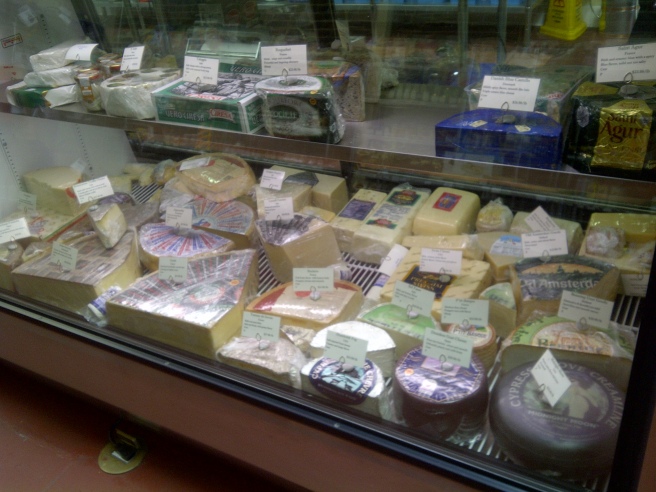Myrtle Tree Garden Café & Market Monrovia, CA
We give Myrtle Tree 5/5 stars! 
Ambiance:
 Nestled in a historic building & preserving much of the historic brickwork, a skylight, & earth-tones, the Myrtle Tree Cafe brings relief to Old Town Monrovia. Everything is very neat & clean, so comfort takes you over when you sit down. We were surrounded by beautiful plants & smooth, finished wooden furniture. Softly playing samba-esque background music that perfectly complements the garden-style atmosphere (think Santana’s Oye Como Va & Volare by Gipsy Kings, for example) expediently ships your stress straight to Timbuktu. The air conditioning is at the perfect temperature, & on a hot summer day you won’t want to leave.
Nestled in a historic building & preserving much of the historic brickwork, a skylight, & earth-tones, the Myrtle Tree Cafe brings relief to Old Town Monrovia. Everything is very neat & clean, so comfort takes you over when you sit down. We were surrounded by beautiful plants & smooth, finished wooden furniture. Softly playing samba-esque background music that perfectly complements the garden-style atmosphere (think Santana’s Oye Como Va & Volare by Gipsy Kings, for example) expediently ships your stress straight to Timbuktu. The air conditioning is at the perfect temperature, & on a hot summer day you won’t want to leave.
*A side-note: The wide tables & chairs in the photo above are just the perfect height; not too low or too high from one another. This means that you can keep a comfortable straight back while you eat; a rare treat nowadays.
Variety is the spice of life, & it’s all here in both community & European food options. The customer-base varies from families to students; church groups to local businesspeople. The place attracts a wealth of ethnic diversity; folks of all ages are included among its patrons. The Monrovia Farmer’s Market takes place right outside every Friday evening, making this stop a great satellite base for browsers & anyone in the mood for that old fashioned community experience.

Local art, jewelry, and home-made organic soaps & candles are sold inside the Myrtle Tree, as well – it’s almost as if the Farmer’s Market extends into this hidden gem of a cafe.

Food:
*Note: We order everything without dressing or condiments so as to gauge the true quality of the food. We recommend ordering this way for the best experience at most restaurants as condiments tend to steal the show from the more substantial ingredients.
We ordered 1/2 sandwich & 1/2 salad (it’s not on the menu but they’ll make it for you if you ask!) We not only got our half-sandwich & half-salad – we actually received a WHOLE (panini) sandwich & a generous portion of salad, winding up with about a $4.50 value! Organic Black Cat brand (Intelligentsia) coffee was enjoyed, served with Heritage Farms Organic milk from a cute personal ceramic creamer, if you ask for it, all with free refills – the only problem with that is the coffee comes from a default dispenser with the dreaded plastic nozzle (pretty standard, but we recommend opting for the espresso drinks instead in order to avoid unnecessary consumption of leeched plastic particles).

As we were dining in and to our great appreciation, everything was served in ceramic (no plastic or plastic-lined ‘to go’ cheapskate-ware) & the salad was really washed – still slightly moist even though we ordered it without any dressing; it was unmistakably fresh & thoroughly washed. This is the first time we’ve ever seen proof that a restaurant-salad was actually washed. Savory was the panini – the Jamon Serrano panini, to be exact (named after the special ham from Serrano, Italy that resembles prosciutto) that, paired with Manchego cheese & fig jam, gives this sandwich a distinct and lovable flavour. The 1/2 tuna salad (really, it was a whole tuna salad) was made from thinly sliced organic heirloom carrots, cucumbers, greens, & tomatoes as well as delicious tuna from Italy. We were absolutely giddy with each bite & sip about this meal. We could not stop smiling.
Service:
Excellent, accommodating, patient service by friendly people. Everyone here is genuinely smiling, even us – & we’re picky! There are no passive-aggression issues with the service here; just prompt, genuine good service that takes great care in presenting the high-quality food that the restaurant is actually very proud to serve. The servers here keep a positive attitude, accommodate special orders and modifications with no attitude, and serve the same high quality food each time you visit.
Price:

Everything is absolutely delicious & organic & *almost reasonably priced with consideration for its value & quality! The Myrtle Tree beats Pasadena’s Green Zone out of the park in terms of pricing for organic meals.
*That said, the pricing on the organic Myrtle juice (we enjoyed the GREEN type!) is actually a bit hefty for the quantity of juice you receive, especially since it comes in plastic.Try Pasadena’s nearby Juice Served Here for an amazing organic juices and powered-up nutmilks in glass!


In consideration of Myrtle Tree’s awesome imports selection & the incredible, truly healthy organic options available here, we believe this is the best café in Monrovia &, we’d venture to say, in all of Los Angeles. Natural treats from France, Britain, & Italy are available here. Our review especially features Chewits from Belfast, England! Delicious & fruity, you’ll be fighting yourself not to gobble the whole package of Chewits up in one sitting.

If dining in, we recommend browsing their menu & calling your order in slightly ahead of time for immediate service upon arrival. If you don’t mind a brief stay, prepare for a six- to ten-minute wait for your meal, possibly more if you come during the noontime lunch rush. (It’s worth it, so hold on! Everything is made fresh to order.) Also, during this brief rush-period, the table-busing can be a bit slow.
Up the Standard really put Myrtle Tree’s feet to the fire, and it passed all of our tests with flying colors. If we ran a restaurant, it would be just like this (we’d probably hire another employee to bus tables at rush hour, though)! We have continued to visit Myrtle Tree several times since our first visit, & we’re hooked! Try the Organic Black Cat brand (Intelligentsia) latte, the Tuna Salad (the tuna comes from Italy & trust us – this salad does not require any dressing, so order it plain – you won’t regret it!), & the Organic Butternut Squash Bisque!
Here are a few more recent photos:



The extensive cheese selection is impressive; and there is a charcuterie case to match.
How would you rate this?

–Up the Standard







